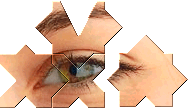Shame is fundamental to the experience of anyone with BPD
and is the most crucial emotion that must be addressed if
recovery is to occur. Shame is often confused with guilt,
but these emotions have very different meanings. Shame is
about who we are, while guilt is about what we do. Shame
therefore reflects more lasting beliefs about the self than
guilt. When we feel guilt, we expect retribution for what we've
done. When we feel shame, we expect contempt from others and
feel contempt for ourselves.
Shame is connected with a wealth of negative self-beliefs
that may include fundamental assumptions of defectiveness, the
belief that one is helpless to survive alone, beliefs about
physical defectiveness ("I am fat, deformed, repulsive to
others), mental defectiveness (I am stupid, incompetent,
inarticulate), or sexual defectiveness, and the belief that
one is unworthy of the love and attention of others.
We feel shame about anything about ourselves that we would
prefer others not to see. The body language of shame is about
being invisible or not acknowledging being seen by others. We
become small in posture by slouching or turning away. We avert
our gaze from that of others, which is reminiscent of a baby
covering its own eyes and imagining that it has become invisible
to others. As adults, however, failing to meet another's gaze
is also a sign of submission.
We also feel shame whenever we fall short of our own
expectations of ourselves, however unrealistic they may be.
Impossible goals, such as the total eradication of body fat,
inevitably lead to deepening shame, which in turn may be
reflected in an increasingly distorted self or body image.
This is the cycle of shame that fuels the compulsive
self-starvation of anorexia nervosa. Shame is therefore
connected with the fantasy of how we imagine we are supposed
to be and obstructs our vision of who we really are.
While shame has many roots, it is a natural consequence
of abuse and neglect. What all forms of abuse have in common
is the contempt that an abuser has for a victim. The deeper
pain of being abused is the shame that derives from being an
object of contempt. Many abusers show their contempt explicitly
in the form of degrading words, but all abusers show contempt
by their assumption that their victim's primary role is as an
instrument for their gratification. Shame in turn results in
submissiveness that tends to perpetuate the cycle of abuse.
Dr. Donald Nathanson has pioneered the study of shame and
its relationship to the psychotherapeutic process. He defines
four categories of learned responses to shame, which he
visualizes as the four points on a compass. On one axis lies
"Withdrawal" at one pole and "Avoidance" at the other. On the
other axis lie "Attack self" and "Attack others."
"Withdrawal" behaviors include various forms of hiding from
others, ranging from averting ones eyes and maintaining silence
in the presence of others to reclusiveness and flight. Withdrawal
can lead to isolation and feelings of abandonment, confirming
the belief that we are unworthy of the company of others and
therefore reinforcing shame.
"Attacking self" includes a repertoire of behaviors that
are designed to protect us from abandonment at all costs. These
are self-negating, submissive gestures that acknowledge the
superior power of another, whose presence has become important
to us. This can also contribute to the cycle of abuse.
"Avoidance" includes all the behaviors that are designed
to keep from feeling the shame. This ranges from the use of
drugs and alcohol to obliterate feeling to the distractions
of sexual indulgence, materialism, and vanity. Avoidant
behaviors include a variety of things we do to cover up the
defects that we imagine others see in us. They are often
cosmetic in quality and serve to distract both ourselves
and others from these defects.
"Attacking others" includes a repertoire of desperate
behaviors that serve to belittle others as a last ditch
attempt to rescue self-esteem by feeling bigger at another's
expense. The attacks may come in words or actions. These
behaviors inevitably distance us from others, again raising
the threat of abandonment. These behaviors also result in
shaming others and pass the wounds along.
These four kinds of responses to shame are all intricately
interrelated, are self-defeating, and therefore perpetuate
the cycle of shame. They are behind the many impulses with
which people with BPD must struggle. They are connected with
the terror of abandonment that characterizes BPD as well as
with the difficulty that people with BPD have in achieving
intimacy.
© Dr. Richard Moskovitz
For more on Shame and Guilt in general see links below:
Toxic Shame
Shame and Guilt
Child Abuse: Permanent Effects on the Brain?

